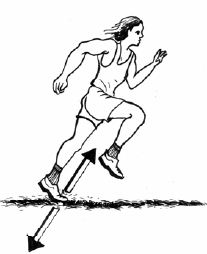Whenever a force acts on one body, at that time an equal and opposite force acts on some other body. This matter is generally stated as –
To every action there is an equal and opposite reaction.
This statement is known as Newton’s third law of motion.
Therefore, according to Newton’s third law, the values of the action and reaction forces are same but their directions are opposite to each other. In below figure if the object P exerts a force F1 on the object Q, then according to this law, the object Q will also exert an equal and opposite force F2 on the object P. The force exerted by the object P on object Q is called action force and the force exerted by Q on P is called reaction force.

Therefore, according to Newton’s third law, F1= – F2
It is noticeable that the action and reaction force act on different bodies. The reaction force will exist as long as the there is action.
Example: Walking on road In our daily life we walk or run on the ground [below figure]. When we walk on the ground, we exert a backward force on the ground by the leg behind obliquely. This is the action force. According to the third law a reaction force is produced opposite to this. We are able to walk on the road due to this reaction force.

Firing by a gun
When a person fire with a gun, he feels a backward push at that time. What is the reason behind this? In this case, action and reaction force of bullet and gun exists for the same time. According to the Newton’s second law of motion, the bullet and the gun acquire equal and opposite momentum. As a result the bullet moves forward with a particular momentum and the gun moves backward with a momentum of same magnitude but opposite in direction. Due to this, the person will feel a backward thrust. The backward velocity of the gun will be smaller in comparison to that of the bullet as the mass of the gun is large.











